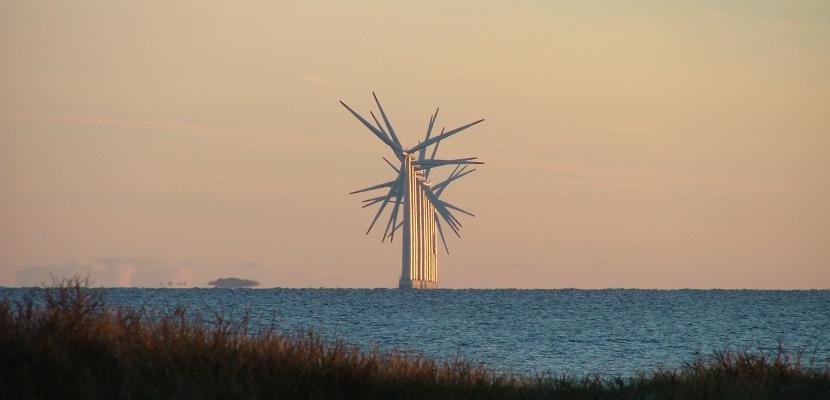Image

Renewable Energy Island
Published on 10 October 2019

Denmark
This is the good practice's implementation level. It can be national, regional or local.
About this good practice
The island of Samso became a 100% renewable energy island in 2007. In other words, the annual renewable energy production matched the annual energy consumption. The island still consumes fossil fuel, but that is compensated by an export of renewable energy. The island has an electric cable to the mainland.
Samso was announced Denmark's Renewable Energy Island owing to a political decision.
Samso met the goal by installing wind turbines offshore and onshore, by building four district heating plants based on biomass, and by helping house owners to save energy and convert oil boilers to biomass or heat pumps. At that time the population was 4100 people.
The main stakeholders were the citizens, local farmers, the municipality, and some external investors. The island benefits from local ownership, because the profit from the investment stays on the island.
Groups of citizens (guilds) own shares in wind turbines. Farmers own other wind turbines, alone or together. The municipality invested in five offshore wind turbines. One district heating plant is owned and operated by the consumers themselves. The district heating company is a coop. Another district heating plant is owned by a family business. The two last district heating companies are owned by an energy supplier on the mainland. The project objective was to prevent income from disappearing out of the island by means of engaged citizens. It is unique that the Samso transition involved a whole community of 4100 citizens.
Samso was announced Denmark's Renewable Energy Island owing to a political decision.
Samso met the goal by installing wind turbines offshore and onshore, by building four district heating plants based on biomass, and by helping house owners to save energy and convert oil boilers to biomass or heat pumps. At that time the population was 4100 people.
The main stakeholders were the citizens, local farmers, the municipality, and some external investors. The island benefits from local ownership, because the profit from the investment stays on the island.
Groups of citizens (guilds) own shares in wind turbines. Farmers own other wind turbines, alone or together. The municipality invested in five offshore wind turbines. One district heating plant is owned and operated by the consumers themselves. The district heating company is a coop. Another district heating plant is owned by a family business. The two last district heating companies are owned by an energy supplier on the mainland. The project objective was to prevent income from disappearing out of the island by means of engaged citizens. It is unique that the Samso transition involved a whole community of 4100 citizens.
Expert opinion
The good practice Renewable Energy Island is an example of a mission-oriented approach. The island of Samso in Denmark sets the mission to become a 100% renewable energy island. The annual renewable energy production matched the annual energy consumption in 2007. The good practice highlights the importance of political leadership and to design an integrated renewable energy strategy with offshore and onshore wind turbines, biomass plants, societal changes, and energy efficiencies... As a mission-oriented approach, the success of the good practice was possible due to the co-ownership and co-creation across many different stakeholders on the island. The co-ownership allowed to empower citizens to make the required societal changes to promote renewable energy production and consumption. Moreover, it shows the importance to set bold but realistic missions and to promote a stet-by-step approach. Indeed, the next mission for the island of Samso is to become a fossil fuel free island by 2030.
Works at
Interreg Europe Policy Learning Platform
Resources needed
Through the transition period the investments amounted to 55 million euro. Of these, only 8 million euro were Danish or EU grants. The remaining 47 million euro came from stakeholders, such as citizens, farmers, the municipality, and some external investors.
Evidence of success
In 2007 Samso was carbon negative, which was early for its time. The island monitors its energy balance carefully (see the good practice Energy Balance). However, as the Danish electricity grid contains more and more renewable energy, Samso's compensation from export becomes less and less worth. Today, the island is 'only' carbon neutral. Today, fourty municipalities in Denmark calculate their energy balance (see the good practice Energy Balance).
Potential for learning or transfer
Once an island, or an island-like area, has compiled its energy account, the account becomes the foundation for an action plan. It shows clearly the consequences of transitions to renewable energy. The goal of such an action plan is to replace fossil fuels with renewable energy within a given span of year.
In fact, 56 island sustainable action plans were submitted under the SMILEGOV project, which concerned governance of islands. El Hierro (Canary Islands) attempts to become autonomous, which is much more difficult. Iceland relies almost entirely on self-made energy.
The Samso Energy Academy receives annually 3000 visitors that wish to understand how the transition to renewable energy was possible. They are journalists, politicians, interest groups, students, and energy tourists from many countries. They also help to boost the economy.
In fact, 56 island sustainable action plans were submitted under the SMILEGOV project, which concerned governance of islands. El Hierro (Canary Islands) attempts to become autonomous, which is much more difficult. Iceland relies almost entirely on self-made energy.
The Samso Energy Academy receives annually 3000 visitors that wish to understand how the transition to renewable energy was possible. They are journalists, politicians, interest groups, students, and energy tourists from many countries. They also help to boost the economy.
Further information
Website
Good practice owner
You can contact the good practice owner below for more detailed information.
Organisation
Samso Energy Academy

Denmark
Midtjylland
Contact
Engineer
